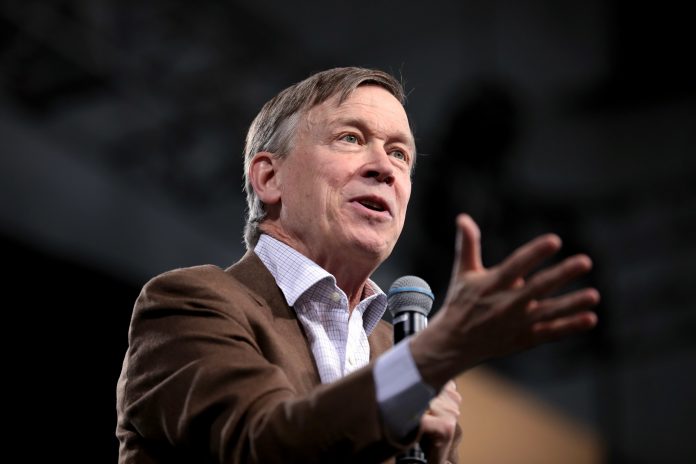In the last few weeks, Seth Moulton, John Hickenlooper, Kirsten Gillibrand and Jay Inslee have dropped out of the Democratic primary campaign for president. Hickenlooper and Inslee both had resumes that in previous elections could have made them frontrunners for the nomination, but their campaigns never got any traction this year. Both also immediately turned their attention to other elections. Inslee will seek a third term as governor of Washington while Hickenlooper will run for the Senate in Colorado against Republican incumbent Cory Gardner. Moulton, like Eric Swalwell a few weeks earlier, has decided to run for his safe congressional seat rather than continue a presidential campaign he had almost no chance of winning. Gillibrand will return to the Senate.
What was once a crowded Democratic field is an only slightly less crowded field as there are now 20 Democrats seeking their party’s nomination, except that isn’t quite the case. The race now is really a five candidate race with Joe Biden, Bernie Sanders, Elizabeth Warren, Kamala Harris and Pete Buttigieg the only candidates with enough support and resources to wage a campaign. Three others, Corey Booker, Julian Castro and Amy Klobuchar are around the fringes of the race and might become relevant if one of the frontrunners stumbles badly or if they somehow get a huge break, but that is unlikely.
Despite what some candidates say to try to bolster their longshot campaigns we are no longer in the early stages of the race. One piece of evidence that is usually cited by these candidates is that Bill Clinton was at about one percent in the summer of 1991, but that is a data point that is not relevant now. After all, Clinton did not even announce his candidacy until October of 1991 and for most of the summer many of the Democrats ahead of him in the polls never ended up running for President in 1992.
The notion that the Democrats have a weak bench or lack a candidate who can take on Trump is a right wing talking point grounded more in reactionary hope than reality
The next debate is scheduled for September 4th, but at the moment only ten candidates have qualified. After that debate, those who did not participate in the debate or who did not move any voters during that debate will begin to see the race very differently. The reason for that is a very human one, summer will be over. Accordingly, school will be getting back in session, so any candidates who have young children will have to explain to their spouses and kids that they will be away most of the fall not making any money running for a job that they have almost no chance of getting. For young families, spending the summer with a parent running for president can be a fun and extraordinary experience, but when the school year starts, that will change. Even for candidates who do not have young children and are doing poorly in the polls, the race will feel very different after Labor Day. When the summer ends, and the weather begins to get colder in Iowa and New Hampshire, the first two states of the nominating season, running for President can stop being exciting if you have no chance of winning.
The state fair in Iowa or a summer weekend in New Hampshire with the family is fun. However, as fall rolls around and many people begin to refocus on school and work, being away from family, friends and your day job, or simply the day to day stress and fatigue of a quixotic bid for the presidency, is less glamorous. Moreover, the press will soon stop covering the second and third tier candidates, so they will become even less relevant to the process. In a month, people like Andrew Yang and Marianne Williamson who have received decent media coverage in recent weeks will, unless they can very quickly vault into contention, be seen not as interesting and quirky candidates, but as footnotes to the major story.
The speed with which Hickenlooper and Inslee exited the race is a reflection of their lack of preparation but also the extraordinary depth of the Democratic field. The notion that the Democrats have a weak bench or lack a candidate who can take on Trump is a right wing talking point grounded more in reactionary hope than reality. Nonetheless, only one Democrat will be nominated. The challenge for the other twenty is to get out before they damage their own political futures-a moment that has almost arrived for many of them. More importantly, all of these accomplished people, unaccustomed to losing, including billionaire business moguls like Tom Steyer and several high-profile US Senators, must resist the temptation to blame their defeat on DNC Chair Tom Perez, a primary system they think is unfair or anybody else. If the candidates who do not end up as the nominee actively and unequivocally support the eventual nominee, the party’s chances of winning the general election will increase substantially, but those who put their wounded egos ahead of the good of the party and the country can have a very negative impact on the Democratic Party’s chances. Thus, how the other twenty conduct themselves after they leave may ultimately have a greater impact on the outcome of the general election than which of the 21 is the last candidate standing.
www.lincolnmitchell.com
Follow me on Twitter at http://twitter.com/LincolnMitchell

